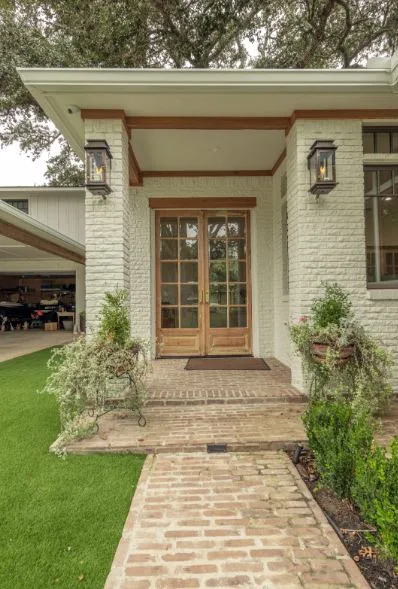The Lone Star State’s Blueprint for Growth: A Construction Renaissance
Texas. The name alone conjures images of vast landscapes, boundless ambition, and a spirit of relentless progress. Nowhere is this ethos more evident than in the state’s booming construction sector. From the sprawling urban centers to the serene expanses of the Hill Country, a transformative building renaissance is underway, driven by an unprecedented influx of residents, a thriving economy, and a forward-looking vision. At the forefront of this monumental expansion is the dedicated work of every Texas construction company, meticulously crafting the infrastructure that supports this burgeoning growth.
Fueling the Fire: Demographics and Economic Momentum
The narrative of Texas’s construction surge is inextricably linked to its population explosion. For years, the state has been a magnet for individuals and businesses seeking opportunity, a lower cost of living, and a dynamic environment. This demographic shift has created an insatiable demand for new housing, commercial spaces, and supporting infrastructure.
The Influx of New Texans
- Migration Trends: Millions have relocated to Texas in recent years, drawn from across the nation and beyond. This consistent inward migration significantly outpaces the national average.
- Affordability & Opportunity: Compared to many coastal states, Texas offers attractive housing prices and a robust job market, particularly in burgeoning sectors like technology, energy, and healthcare.
- Urbanization: Major metropolitan areas like Austin, Dallas-Fort Worth, and Houston continue to experience rapid expansion, necessitating significant residential and commercial development.
A Robust Economic Engine
Texas’s diversified economy provides a stable foundation for sustained construction activity. Key industries contribute significantly to the demand for new builds and renovations.
- Technology Hubs: The state has become a major destination for tech giants, leading to the development of massive data centers and advanced semiconductor manufacturing facilities. These projects represent multi-billion dollar investments, transforming the industrial landscape.
- Energy Sector: Texas’s long-standing dominance in oil and gas continues to drive construction in refining, petrochemical, pipeline, and export facilities, even as the state embraces renewable energy initiatives.
- Manufacturing Expansion: A significant portion of U.S. manufacturing GDP originates in Texas, with ongoing investments in new production plants across various sectors.
- Logistics and Distribution: The strategic location of Texas, coupled with its growing population, fuels demand for warehouses, distribution centers, and improved transportation networks.
Roads, Bridges, and Beyond
- Highway Development: With increased vehicular traffic, continuous investment in highway expansion and bridge reconstruction is paramount to maintain connectivity and facilitate commerce.
- Public Transit Initiatives: As urban centers densify, there’s a growing focus on expanding public transportation options, including light rail and bus systems, to ease congestion.
- Utility Modernization: The expanding population and industrial demand place immense pressure on existing utility grids, necessitating significant upgrades and the development of new energy sources, including large-scale solar projects.
Zoning and Regulatory Frameworks
While Texas is known for its pro-business environment, construction projects are still subject to various local and state regulations designed to ensure safety, quality, and environmental responsibility.
- Local Building Codes: Municipalities across Texas adopt and enforce specific building codes, often based on international standards like the International Building Code (IBC) and International Residential Code (IRC), with local amendments to suit regional needs.
- Accessibility Standards: Projects must adhere to accessibility guidelines, ensuring that buildings and public spaces are usable by individuals with disabilities. This includes specifications for ramps, door widths, and interior layouts.
- Energy Efficiency: Texas promotes energy-efficient construction through requirements that often align with programs like the U.S. Department of Energy’s Energy Star. This encourages sustainable building practices and reduces long-term operational costs.
- Environmental Considerations: Depending on the project’s scope and location, environmental assessments and compliance with state and federal environmental regulations are crucial to minimize ecological impact.
Residential Wonders
- Custom Home Building: Texas’s diverse landscapes, from urban chic to rural retreats, inspire a thriving custom home market. Builders work closely with clients to bring unique architectural visions to life, blending modern designs with regional aesthetics.
- Large-Scale Renovations: Many existing homes are undergoing extensive transformations to meet contemporary living standards, expand square footage, or enhance energy efficiency. This includes full-home remodels, kitchen and bathroom upgrades, and significant layout changes.
- Multifamily Developments: To accommodate the rapid population growth, developers are investing heavily in new apartment complexes and townhomes, particularly in high-demand urban and suburban areas.
Commercial and Industrial Powerhouses
- Office and Retail Spaces: The expansion of businesses necessitates new office buildings, retail centers, and mixed-use developments that integrate living, working, and entertainment spaces.
- Healthcare Facilities: With a growing population, demand for hospitals, clinics, and specialized medical centers continues to rise, leading to significant construction in the healthcare sector.
- Educational Institutions: New schools, university expansions, and research facilities are being built to support the state’s commitment to education and innovation.
- Manufacturing and Industrial Facilities: The sheer scale of industrial growth in Texas, particularly in semiconductor and energy sectors, requires specialized construction expertise for advanced manufacturing plants, processing facilities, and large-scale distribution hubs.
Embracing Advanced Technologies
- Building Information Modeling (BIM): The use of BIM software is becoming standard practice, allowing for more precise design, better collaboration, and reduced errors throughout the construction lifecycle.
- Modular Construction: For certain project types, modular construction offers speed, efficiency, and cost savings, particularly in residential and commercial sectors.
- Robotics and Automation: While still emerging, robotics and automation are beginning to find applications in specific construction tasks, improving safety and productivity.
Sustainable Building Practices
- Green Materials: Increased adoption of environmentally friendly and recycled building materials is contributing to more sustainable structures.
- Renewable Energy Integration: Many new commercial and residential projects are incorporating solar panels, geothermal systems, and other renewable energy solutions to reduce their carbon footprint.
- Water Conservation: Given Texas’s climate, water-efficient landscaping, rainwater harvesting systems, and low-flow fixtures are becoming more prevalent in new constructions.
- Waste Reduction: Construction companies are implementing more rigorous waste management plans, diverting materials from landfills through recycling and repurposing efforts.
The Enduring Spirit of Collaboration
The success of any major construction undertaking in Texas hinges on effective collaboration. From architects and engineers to contractors, subcontractors, and suppliers, a seamless partnership is essential to bring complex visions to fruition. A strong general contractor acts as the orchestrator, ensuring every element aligns to deliver projects on time and within budget. Their local expertise and network of trusted professionals are invaluable in navigating the complexities of the Texas market.
Conclusion
The landscape of Texas is being reshaped before our very eyes, propelled by a vibrant economy and an ever-growing population. The construction industry, a vital artery of this growth, continues to innovate, adapt, and build for the future. As new residents arrive and businesses expand, the demand for quality construction remains paramount, underscoring the critical role of skilled professionals and forward-thinking companies. The spirit of progress in the Lone Star State is as strong as ever, laying the groundwork for even greater achievements.
Frequently Asked Questions (FAQs)
Q1: What are the primary drivers of the construction boom in Texas?
A1: The primary drivers include rapid population growth due to migration, a strong and diversified economy, significant investments in technology and energy sectors, and continued demand for both residential and commercial real estate.
Q2: How does population growth specifically impact residential construction in Texas?
A2: Population growth creates a high demand for new housing units, including single-family homes and multifamily developments. This leads to increased construction permits, new community developments, and a strong market for large-scale home renovations.
Q3: What types of commercial construction projects are prominent in Texas?
A3: Prominent commercial projects include office buildings, retail centers, healthcare facilities (hospitals and clinics), educational institutions (schools and universities), and extensive industrial facilities such as data centers, manufacturing plants, and logistics warehouses.
Q4: Are there specific challenges faced by Texas construction companies?
A4: Challenges can include managing rapid growth, securing skilled labor, navigating supply chain fluctuations, ensuring compliance with evolving building codes and environmental regulations, and managing the demands placed on the existing infrastructure.
Q5: What role does sustainability play in modern Texas construction?
A5: Sustainability is increasingly important, with a growing emphasis on using green building materials, integrating renewable energy sources (like solar), implementing water conservation strategies, and adopting waste reduction and recycling programs on construction sites.
Q6: How important are general contractors in Texas construction projects?
A6: General contractors are crucial as they oversee the entire construction process, including planning, permitting, coordinating various trades, managing timelines and budgets, and ensuring quality control. Their local expertise and network are vital for successful project delivery.





